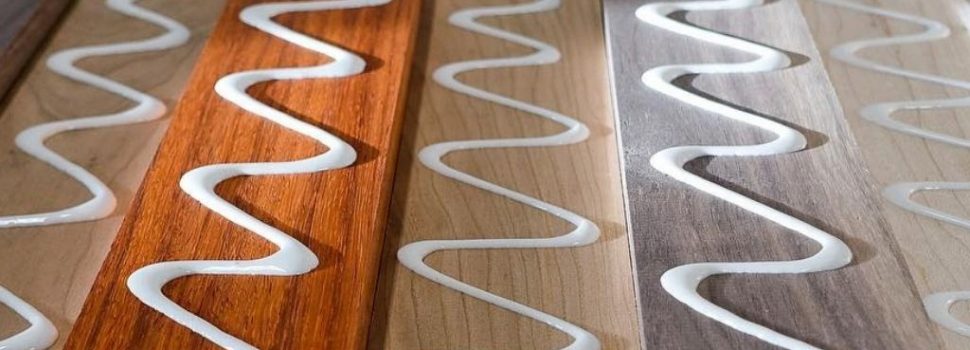
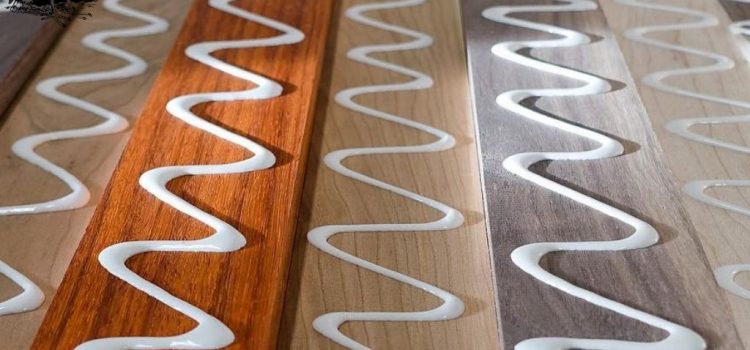
Best wood glue for Woodworking and Wood carving
Wood Carving Tools reviews 10.03.2021 Jeff Richardson 12
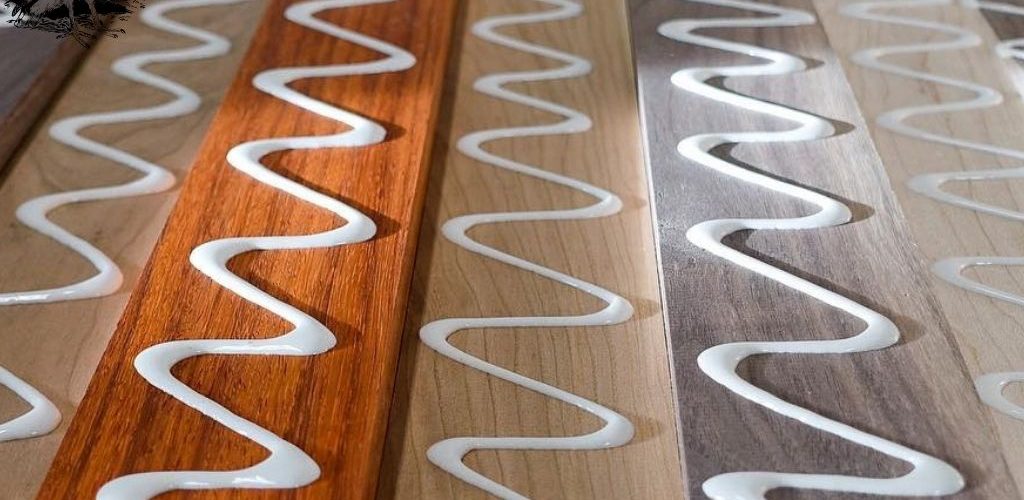
It took me some time to admit that wood glue is an essential part of any craftsman toolkit. Right next to my chip carving knife and chisel, a pack of wood glue waits patiently to help me out.
But, what is the best glue for woodworking, and how is it different than the best wood glue for a wood carving project? What makes the best waterproof wood glue, and why do I need one?
These are some of the questions that I’ll help you get answered in this article.
If you need an extra tip on the type of wood to use, check out my experience with different wood types in What is the best wood for carving.
In case you are working on a complex project that you need power carving tools, perhaps my list of the Best power wood carving tools can be helpful.
For sure, almost any whittling project requires good quality chisels and gouges. I’ve reviewed the best of them in my article – Best wood carving chisels and gouges set.
To complete your toolset for the next whittling, find out What is the best whittling knife in 2020 for me. I must say I am still using the same BeaverCraft model, but I’m looking forward to hearing your impressions.

- Titebond 1415 III Ultimate Wood Glue
- Strong non-toxic glue. Excellent for small carving projects as it can be sanded and the joints are completely unnoticeable.
- $18.25
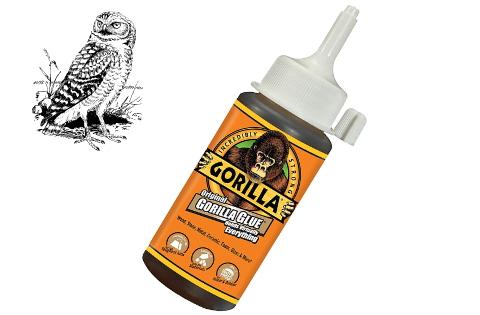
- Gorilla Original Waterproof Polyurethane Glue
- A powerful glue that can work with nearly any material, not only wood. Great for combined projects.
- $8.50
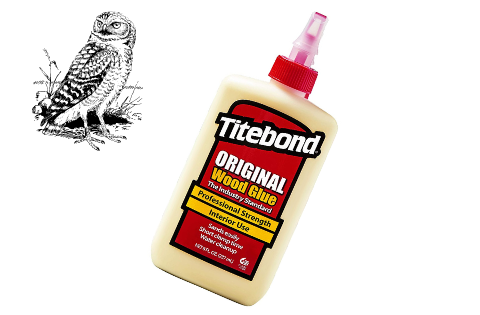
- Titebond 5063 Original Wood Glue
- The best value glue for beginners. Not good if used outdoors.
- $9.08
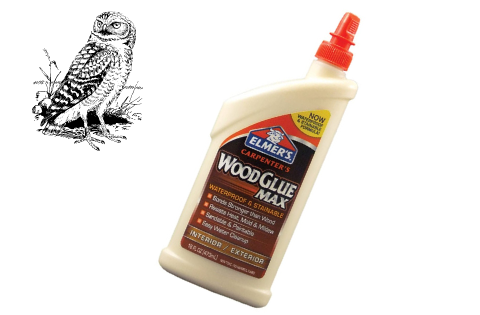
- Elmer's E7310 Carpenter's Wood Glue Max
- Number one glue for woodworking. Not the greatest for wood carving as it can be too visible on the outside.
- $11.00
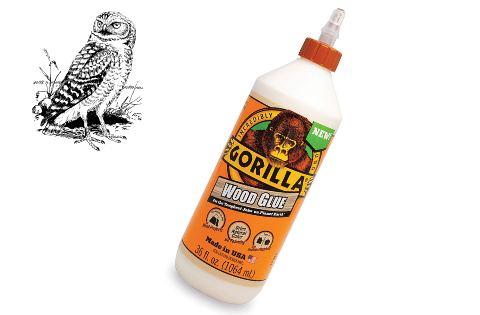
- Gorilla 6206005 Wood Glue
- Works great on hardwood, but it cannot be sanded to cover the joints.
- $15.15
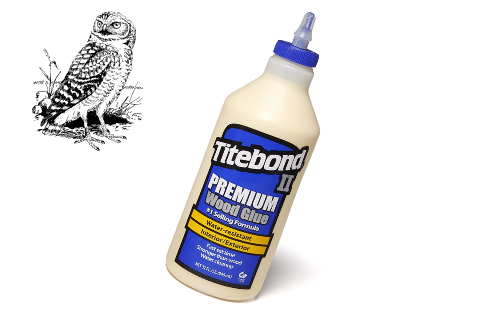
- Titebond II Premium Wood Glue
- Strong and resistant wood glue for indoor use. Can be sanded and works for all wood carving projects.
- $15.93
Why do I need wood glue?
First of all, you might want to indulge in more complex projects. Some ideas you wish to realize simply cannot be made out of a single woodblock, so you might have to put some pieces together.
Not all wood carving projects you will be working on are simple to pull off with just carving and roughing. Sometimes you will also be making mistakes that could be handled with glue. It can be a parachute when your project goes downhill and needs a little push.
Now, you can get things done even with cheap wood glue. The best glue for wood, in that sense, has little to do with the price of the brand.
To answer the question of what’s the best wood glue, we should review types of glue for wood and the features a glue offers – that you need for your project.
Types of Wood Glue
Wood glue can be diversified into five main categories, based on the substance it is made of. When choosing which one to buy, there are big differences between natural wood glues for a small project and the best construction adhesive that needs to be reliable and hold weight.
You need your wood glue to dry fast, be water-resistant if possible, and to respond well to sanding. Some glue will not accept wood stains very well, so that is another aspect you should take into consideration.
In general, fast-drying wood glue is a good choice. This won’t take up too much of your time while waiting for it to dry, so you can move onto the next stage of your project quickly.
Furthermore, pay attention if the glue is water-resistant. This means a lot if you are using it for something you will be washing – like a bowl, or a spoon. The best epoxy for wood is recommended if you need the glue you can trust for projects such as boats, that you need secured from water.
For caricature carving projects, the important factor is whether the glue can resist sanding. If a glue dries to be brown/yellow, with a little sanding you can mask the joints and make them appear natural.
If you wish to combine wood with other materials, polyurethane-based glue will help you glue metal to wood. This is also the best glue type for porcelain as well. Some other glue types known for their general use are cyanoacrylate adhesives or so-called superglue that you can also use to glue wood to metal, but the bond won’t be as durable.
PVA adhesive – Permanent formula for gluing wood to wood
There are two types of PVA formulas – the white types designed for indoor use, and the yellow kind also called carpenters glue, created for outdoor use. This is a strong adhesive contained of synthetic polymer which is great for strong bonds, especially when you are gluing wood to wood. The bonds are flexible and permanent, while the glue is nontoxic and safe to use.
The downside of this adhesive is the residue that you will have to sand over, and the fact that it does not accept wood stains very well. This glue is permanent, though, and if you press the wood blocks tight together for it to dry they will stay glued forever.
Polyurethane adhesive – Creates flexible, durable joints
This synthetic plastic resin is the key ingredient in many wood glue, but also wood stains and carpentry finishes. The substance works best in moist conditions and when applied in moist spaces it will create a stronger bond when drying, unlike most other wood glues.
Polyurethane is better than the PVA adhesive if you intend to stain over it, but the excess is heavy to remove when finishing the project. The joints themselves are firm and very durable.
Adhesive based on organic resins – Natural wood glue for delicate projects
Unlike synthetic glues, natural rubber adhesives are based on natural polymers usually derived from the Hevea brasiliensis tree. Natural glue is a good “green” choice, although it is not a heavy duty glue and in comparison to the synthetic ones.
Organic glue has an advantage that the formula can be reversed, and if you need this feature this glue is the one to go for. This is also the best adhesive for delicate projects such as gluing a musical instrument.
Epoxy – Reliable waterproof formula for covering the defects on wood
Unlike other wood glues, epoxy has a thick texture and is primarily designed to fill in the gaps of your project. Epoxy glue for wood is very durable, and it’s double formula – resin plus hardener make it a reliable choice for gluing wood.
Before applying even the best wood epoxy, you should prepare the surfaces to make them clean and sanded for it to work at it’s fullest. The coolest thing about this glue type is the fact that it is waterproof, and it is dependable for designing water vessels.
Cyanoacrylate (CA) adhesive – Quick-dry superglue formula for every household
This is essentially what we know about as “superglue”, the type of glue that creates rigid bonds that are not very lasting and are easier to break than the most. However, this adhesive dries in split seconds in room temperature and this makes it perfect for quick fixing around the house. It is useful when you need a quick wood repair.
It can be used as furniture glue, to put the joints back together if they break, which is why it is very common in households. Residue is easily removed with acetone, and you should be careful not to bring it in contact with your skin, and remove it immediately if you do.
Titebond 1415 III Ultimate Wood Glue – Non-toxic waterproof glue
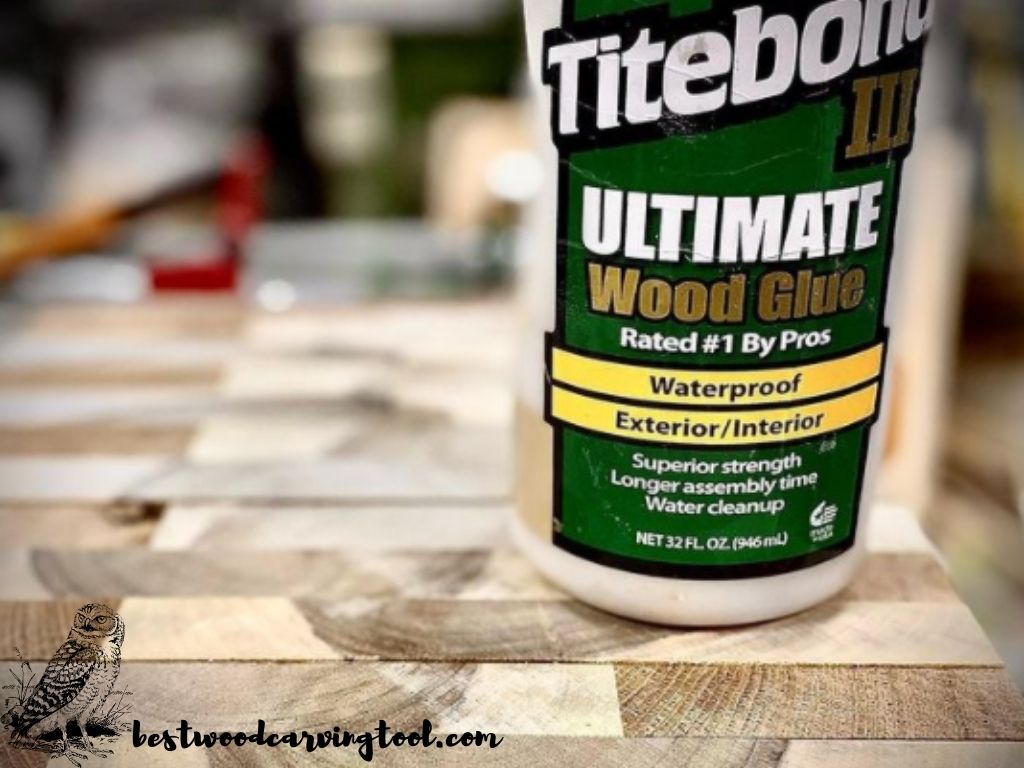
Titebond III or Ultimate is named this way because of its powerful bond strength. It is also more waterproof in comparison to others, and on top of that, it can be applied at lower temperatures.
According to all available features, this is top wood glue. It comes in handy for wood carving projects in particular, because it doesn’t discolor the wood when applied.
Unlike Titebond I and II, the Ultimate glue is suited for outdoor use. This is important to know if you are planning to practice this craft outside or in a chilly workshop.
This is quick-drying wood glue, that doesn’t have that bad chemical smell when you apply it. It is non-toxic wood glue, and it is safe for indirect food contact (if you glue a bowl or a spoon).
- Heat-resistant wood glue that can be used outdoors.
- Water-resistant wood glue.
- Dries quickly, and doesn’t damage when sanding.
- Non-toxic and safe for kitchen dishes carving.
- More expensive than other glues.
To Sum Up
Franklin, the glue manufacturer, has been the pioneer in this industry for decades. Many carvers have the opinion that Titebond is the best wood glue brand, and they are not far off.
This glue is better than Titebond I and II, but also more expensive, for that matter.
Gorilla Original Waterproof Polyurethane Glue – Best permanent glue for wood
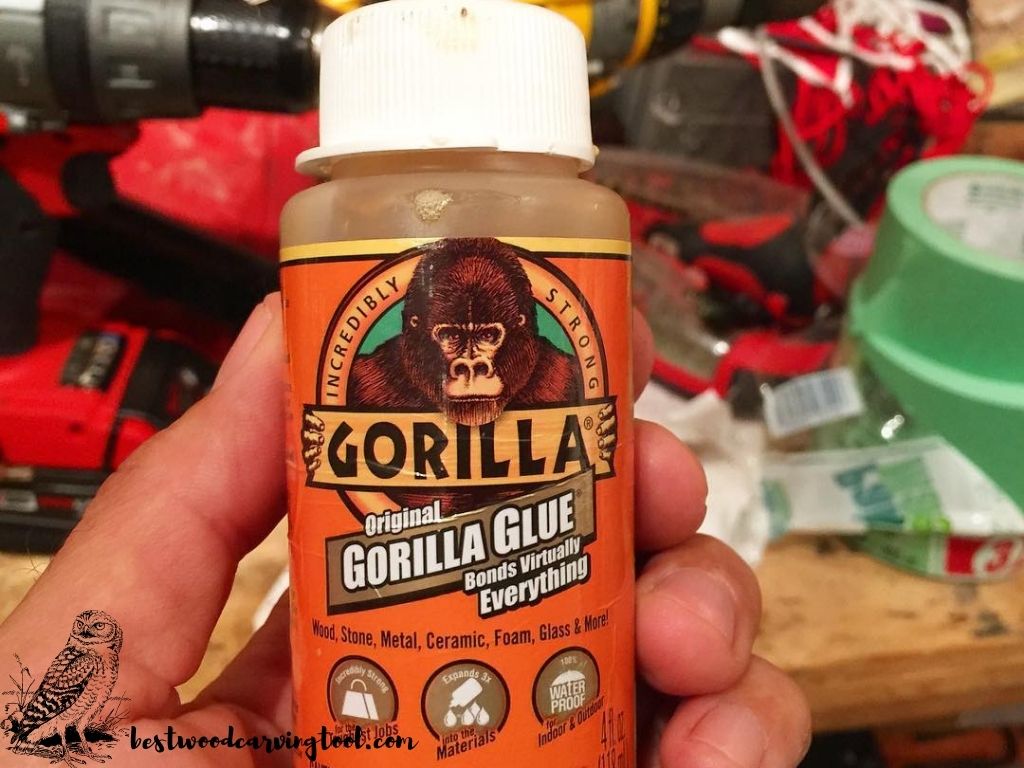
Gorilla has different glues on the market and not all are designed for wood. However, if you ask me if Gorilla glue is good for wood, my answer is: absolutely.
Gorilla wood glue works all right, but it dries kinda lumpy. Gorilla wood glue reviews also suggest other guys found it not as effective as Gorilla glue.
This glue is designed to apply on other surfaces (such as metal), but it works great for wood as well. It is completely dry in less than a day, and the color it dries in is beige, so a little sanding can make it completely fit in.
It is also waterproof and approved to be used for kitchen dishes. It is strong and permanent, and it can be a plus that it works on different materials if you plan on combining wood with metal, plastic, or even leather.
- Strong glue that works on most materials, not only wood.
- Waterproof, and can be applied at any temperature.
- Dries quickly.
- Good for fixing things around the house, not the greatest for small carving projects.
To Sum Up
If we talk about any kind of glue, I could say this is the best permanent glue. I used it to fix many things that were broken in my house. This glue is better than the wood glue Gorilla has to offer, so it easily wins the Gorilla glue vs wood glue situation.
Overall, once you glue it with Gorilla glue, it is bonded forever.
Titebond 5063 Original Wood Glue – The best value for beginner carvers
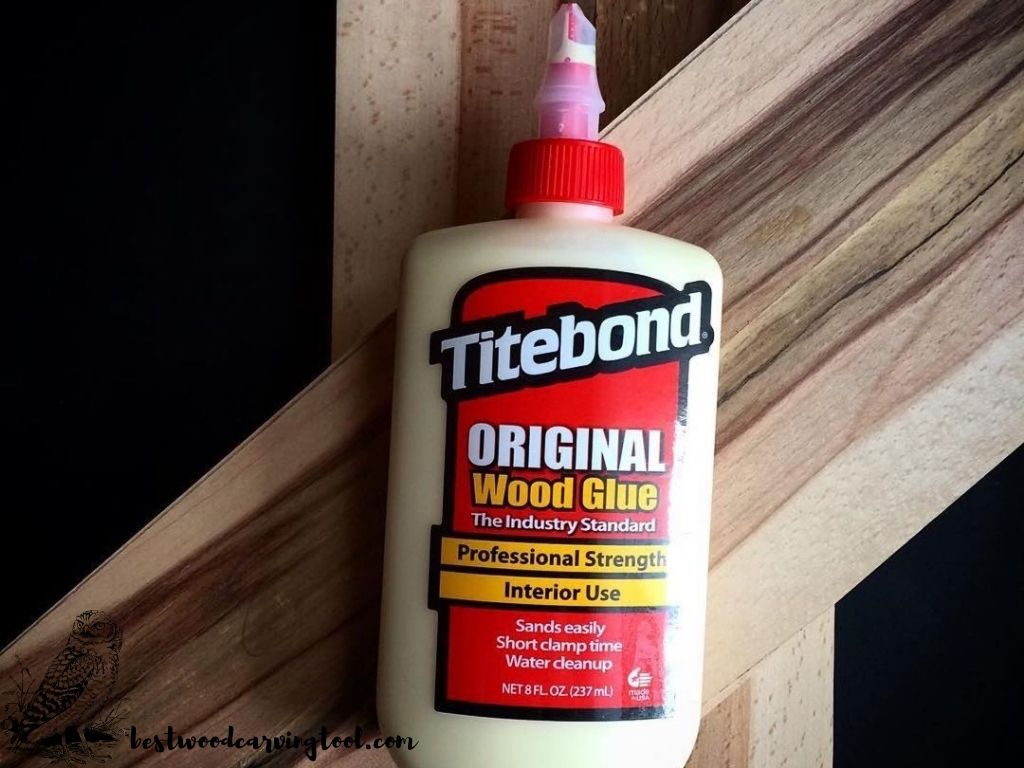
This Titebond glue is basic, yet super strong wood glue. In practice, it is very easy to use and it worked like a charm.
In this Titebond wood glue review, I can only say it is just enough for your project. Of course, it is not as strong and as resistant as the Titebond Premium and Ultimate, but for a woodcarver, it will get the job done.
It is waterproof to an extent, but it can be more sensitive to sanding in comparison with the stronger Titebond glues that are well resistant.
This is not the best wood glue for outdoor use, in fact, it is not outdoor wood glue at all. It is designed strictly for indoor use, and it is super sensitive to low and high temperatures.
- Very strong and can cover nearly all of your beginner’s projects.
- Waterproof and can resist sanding to an extent.
- Great value wood glue.
- Temperature-sensitive and not effective outdoors.
To Sum Up
If you are a beginner at wood carving and you need glue to help you out with some projects, I would recommend this one. It is cheaper than the more extravagant wood glues, therefore an excellent value for basic projects.
Elmer’s E7310 Carpenter’s Wood Glue Max – Best glue for woodworking
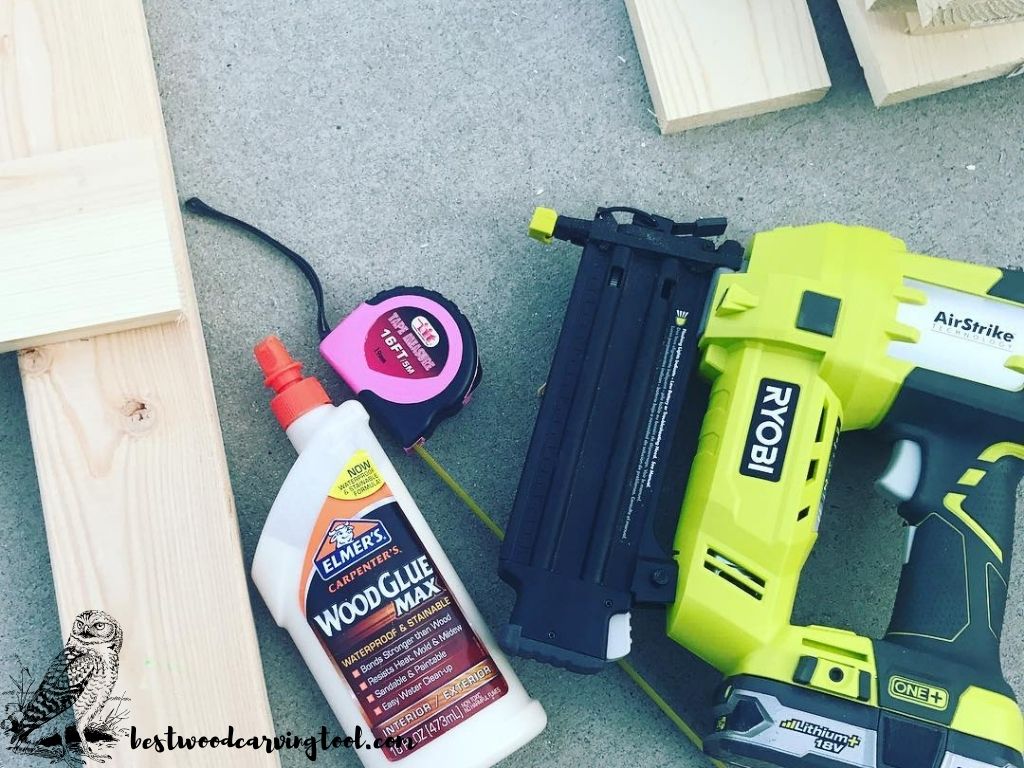
The sole name of this glue suggests it could be the best glue for wood furniture. This is a woodworking glue, and it is used for all types of carpentry.
Because of this, it is designed to easily apply to any wood surface and works for softwood and hardwood equally. What makes it the strongest glue for wood is that it holds wood fibers tight together and the bond is really firm.
I tried using this glue for my woodcarving projects, and it is as effective as they say. On top of its strength, it is waterproof, resistant to high temperatures, and dries quickly.
It is noticeable on small projects, so that’s something I solved with painting my caricatures.
It’s non-toxic, so technically it can be used on kitchen tools, but aesthetically speaking I rather go with Titebond III on this, as it can be sanded and unnoticeable.
- The strongest glue for woodcarving and woodworking.
- Dries in less than a day.
- Non-toxic, and doesn’t stink.
- Water-resistant.
- The bonds are visible on small projects and it doesn’t hold up to sanding as well.
To Sum Up
When talking about performance, this is the best glue for gluing wood together. For wood carving projects, though, especially palm carving, the bonds are visible and can only be covered-up by painting.
So, if you did not intend to paint your final figure, perhaps you should rethink this choice.
Gorilla 6206005 Wood Glue – Great choice for a hardwood
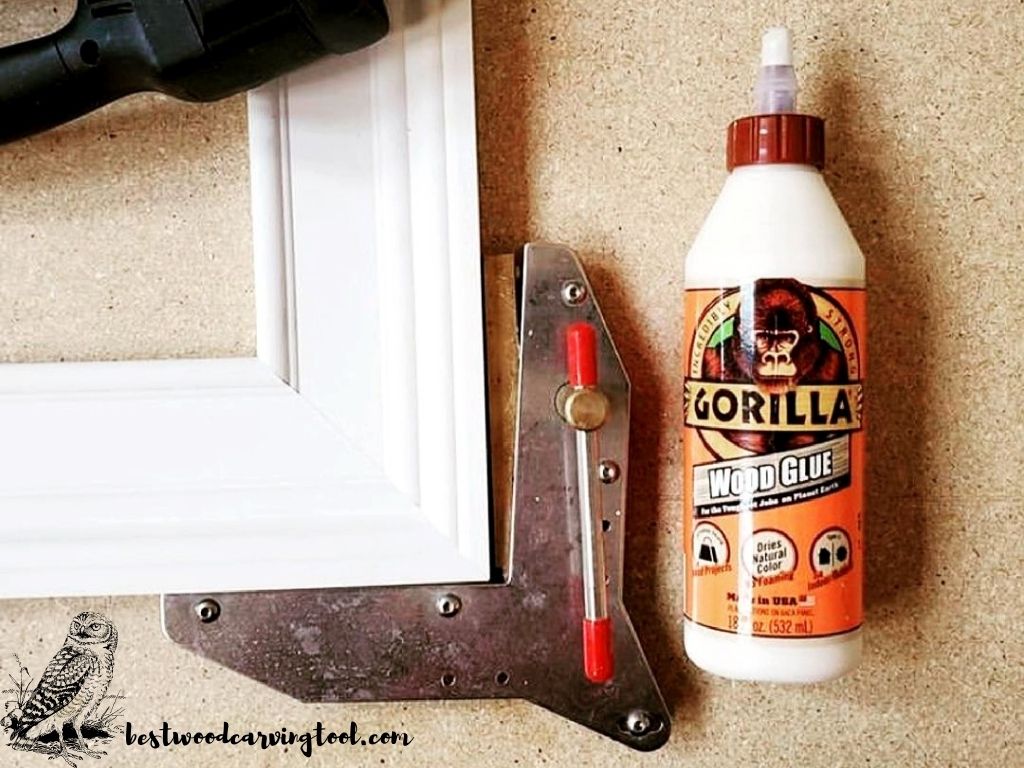
This is a high-strength wood glue, known for its cross-linking bond formula. According to the Gorilla wood glue review, this could easily be the best glue for wood joints.
In my experience, Gorilla glue is a good choice for woodworking, but also for woodcarving. It dries rather quickly, and in less than a day you can continue your project. Unfortunately, you cannot sand the tiniest detail of the glued project without a worry in the world, as it doesn’t sustain sanding very well.
It is shown to be water-resistant and it is safe to be used in bowl carving, spoon carving projects, and other kitchen items (according to FDA).
What I like about this glue is that it is proven to work great with hardwood as well as softwood. This means that it is my go-to tube when I work with heavier projects.
The only downside to this glue is that it is visible on the wood after it is dried. This can be a problem if the project you are working on is small, so it is more noticeable.
- Waterproof wood glue.
- Strong bonding, perfect for joints.
- Dries fast, ready to go in under an hour.
- Safe for indirect food contact.
- Works great with hardwood.
- When it dries, it is still visible on the wood.
- Doesn’t respond well to sanding.
To Sum Up
This glue gets the job done and it is resistant and strong. I love using it for larger projects where I need to merge pieces into one design. In my opinion, though, it is not the best choice for small projects.
Titebond II Premium Wood Glue – Professional wood glue
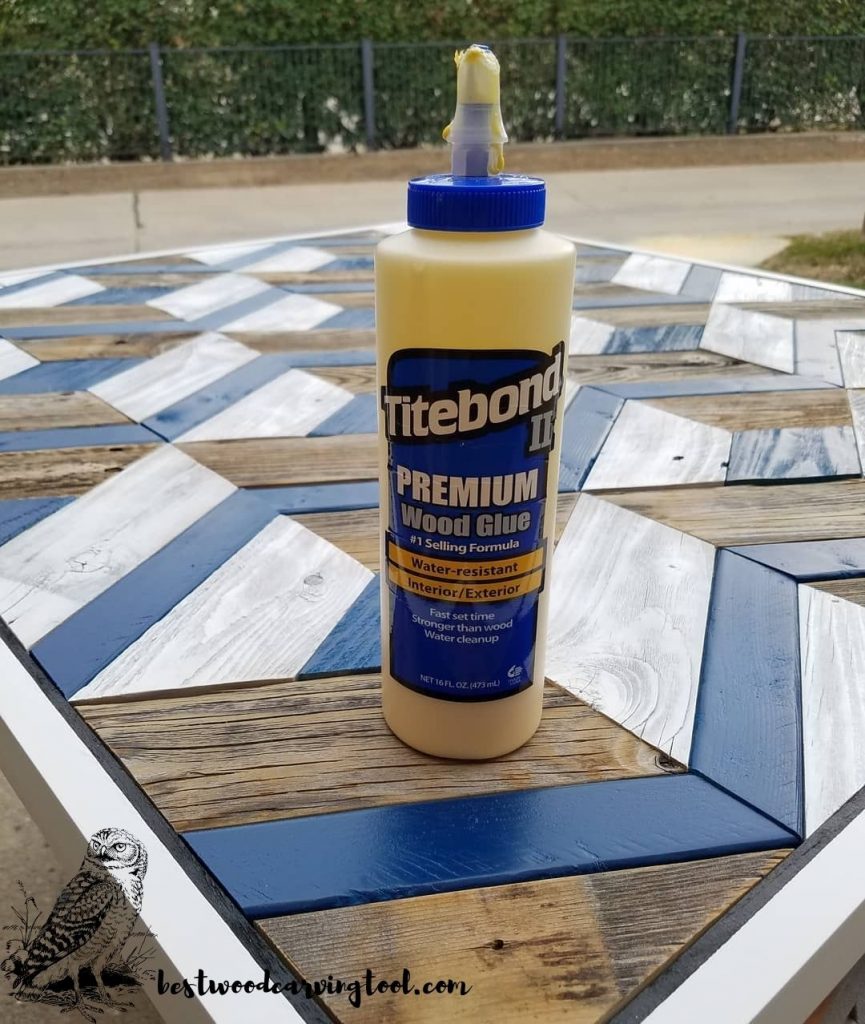
As mentioned before, Titebond is a brand with a high reputation, and each glue is trustworthy. Titebond Premium is super strong and very effective, top-rated wood glue.
This is a professional glue, used by a lot of woodworkers, and it gets the job done. I wouldn’t recommend you use it outdoors or at lower temperatures, as the result won’t be what you hoped for.
This glue has a creamy, wood-like color, and can be sanded to fit in with the rest of the wood. When you apply it at high temperatures, it drips all over the place, so try to avoid that.
It dries quickly and is completely dry in less than a day. It is FDA-approved for culinary tools.
To Sum Up
When it comes to comparison between Titebond Premium and Ultimate, the difference is clear: Titebond III is overall stronger, can be used on lower temperatures, and the shade it dries in is more yellow and closer to the color of softwood.
All things considered, this is a great glue for the price, and can easily fit most of your needs.
To conclude, in my experience, the question of the best wood glue and best waterproof wood glue is one and the same since most glues manufactured for woodworking are now water-resistant.
The best glue for woodworking is, without a doubt, Elmer’s E7310 Carpenter’s Wood Glue Max. However, this is not my choice for wood carving since the glue is super rough and very visible on the outside of the joints.
If I’m making a decision which one I will use in my project, Titebond vs Gorilla wood glue, I would usually go for Titebond. Gorilla glues are designed to bond woodblocks, but Titebond is way more useful for delicate work.
When I work on carving projects, it is very important for me to sand out the joints and make them invisible. My personal choice for the best wood glue is Titebond II – Premium. It is strong, resistant, and not as expensive as the Ultimate glue.
Titebond Premium is designed for indoor use, so I use it inside my workshop, and it performs with flying scores. So, if you also practice wood carving indoors, this is my honest recommendation.
FAQs
How long does wood glue take to dry?
The question of how long to let wood glue dry is a million-dollar question. For most glue types, the wood glue dry time is up to 24 hours. This is how long it takes for it to completely dry before you can be sure the joints will properly hold.
How long for wood glue to dry before applying another layer is a different kind of question, and it varies on the glue manufacturer and the type of the glue (what is it made of). This time period usually varies from half an hour to an hour, and the thinner the layer the faster you can apply the next one.
After you have applied all the layers, the wood glue cure time begins where you should clamp the unstressed joints. It is important to know how long to clamp wood glue since wood glue curing time varies and depends on the glue substance. Before clamping the joints, check the instructions from the manufacturer to know how to treat the newly glued wood.
If you want to know how to make wood glue dry faster, there are some tricks. You can try a heat lamp or a blow dryer – in general, a source of heat will help you reduce the wood glue drying time. Also, depending on the glue type, if you know how long does wood glue take to dry, you can apply thinner layers that will dry faster. But then, if the wood is strong, it might not hold a joint very well.
How to remove glue from wood?
The best substance you can use for removing glue from your wood is acetone-based nail polish remover. Wet the cotton cloth with acetone and rub it over the glue. If the glue is resilient, let it soak for 10-15 minutes and then rub it off. Acetone can be strong and it could possibly damage your wooden surface, so try to apply it over the glue only. If the wood is particularly sensitive, mix acetone with water and repeat the gentle rubs several times.
A rougher way to remove wood glue, especially for removing excess glue from your finished project, is to scrape it off with your knives or a chisel. Make sure the blade you use for this is very sharp because if the edge is dull even slightly, you will need to apply more pressure and potentially scratch the surface of your wood project. After removing the residue, sand the surface with the high grit sandpaper at first, and then polish with fine sanding technique.
How to use wood glue?
Wood glue is best applied in thin layers at room temperature, spreading the glue on both wooden surfaces before you connect the joint. Clamp the joint to let it dry and leave overnight until it is completely firm and ready. Upon drying the wood glue, remove excess from the outside of the joint and sand over the surface to smoothen your project.

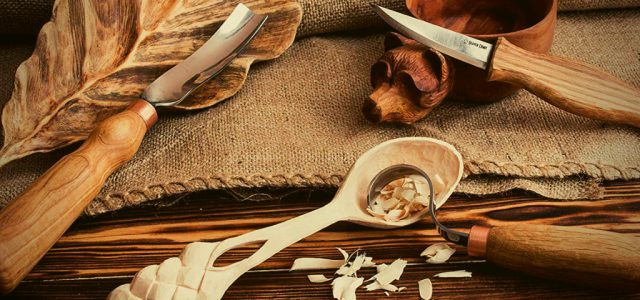
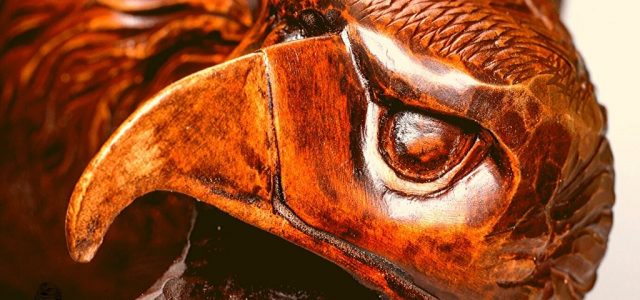
Kevin
17.04.2021 #1 AuthorWhat wood glue is the best to use? I am new and have tried Gorilla Glue but find that it expands significantly when used. What types of glue should I try?
Shawn
24.04.2021 #2 AuthorHi there, I agree with you on the Gorilla glue, even though it sets up quickly I find that it expands quite a bit. Other brands that i have tried is PL Premium and some Chinese brand from Home Depot (I think the name is FastCap or something like that). The PL Premium is not as thick as the Gorilla glue.
Matthew
09.06.2021 #3 AuthorSo, I’m looking to purchase a gallon of wood glue for the first time and would like to know which type of glue is most commonly recommended for cutting boards. What’s the difference between Titebond II, III, and Original?
Roberto
11.06.2021 #4 AuthorA lot of people really like Titebond Original Wood Glues. They are readily available and inexpensive. Titebond III is a little more expensive but has an extended open time, so you can move the pieces around once they start to set up
Matthew
03.07.2021 #5 AuthorI want to glue a pine dowel into chip board but I need to know what type of adhesive would make the joint strong.
Sanford
15.07.2021 #6 AuthorI use an all purpose adhesive for this project. Use your favorite wood glue. To help the glue bond better with the dowel I cut a V notch
Victor
25.07.2021 #7 AuthorIs Elmer’s white glue really waterproof? I put a dried-out brush that was used for it in water and it became soft again.
Russell
03.08.2021 #8 AuthorWhite glue, as you’ve discovered, does become soft in water. That’s because the solvent that white glue contains begins to evaporate when the adhesive is exposed to moisture and air. This causes a chemical reaction with the remaining binder in the glue
Richard
07.08.2021 #9 AuthorMy question is, what type of Titebond glue would you recommend for fixing small wood items?
Samuel
10.08.2021 #10 AuthorIn my opinion, the best glue for this kind of project is polyurethane glue — specifically Titebond III Ultimate Wood Glue , which is waterproof after drying and very resistant
Bryant
15.08.2021 #11 AuthorI’ve found that my Gorilla glue is too thick to use and would like to know if anyone knows what I can thin it with, as well as the ratio for diluting.
Mario
21.08.2021 #12 AuthorTry a small amount of water or white vinegar, then check consistency – Gorilla glue is very viscous (thick), so start with quite small amounts at first. Thinning and mixing ratios depends on the wood being glued – some woods require more thinning than others. Experimentation will tell you what works best